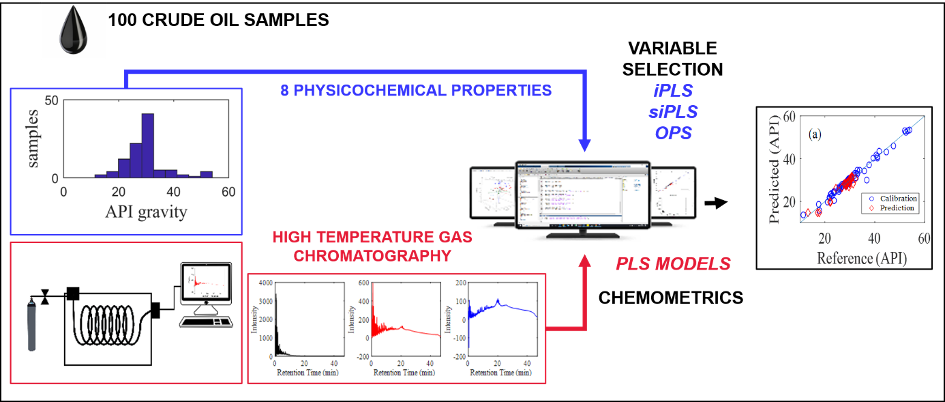VARIABLE SELECTION METHODS APPLIED IN HTGC DATA TO DETERMINE PHYSICOCHEMICAL PROPERTIES OF CRUDE OILS
DOI:
https://doi.org/10.36524/ric.v10i1.2516Palavras-chave:
Variables selection, crude oil, HTGC, biodiesel, smartphone, photometrix, imagem, PLS, OPSResumo
High-temperature gas chromatography (HTGC) is an analytical technique employed in the petroleum industry for component separation. By incorporating chemometrics, HTGC data can be effectively utilized to predict various properties of crude oil. However, HTGC chromatograms generate a substantial number of variables, some of which may lack pertinent chemical information. Consequently, employing variable selection methods becomes crucial to reduce the number of variables and enhance the predictive capability of calibration models. In this study, the interval partial least squares (iPLS), synergy interval partial least squares (siPLS), and ordered predictors selection (OPS) methods were applied for variable selection to construct linear regression models. The main objective was to investigate the potential of these methods in predicting eight properties of crude oil: American Petroleum Institute (API) gravity, standardized kinematic viscosity at 50 °C (VISp), flash point (FP), Reid vapor pressure (RVP), micro carbon residue (MCR), saturates (SAT), aromatics (ARO), and polar (POL) content. While all variable selection methods yielded satisfactory results, the OPS-PLS regression models consistently exhibited the best performance in estimating these properties, achieving root mean squared error of prediction (RMSEP) values of 1.244 for API, 0.029 for VISp, 15.356 °C for FP, 0.324 kPa for RVP, 0.629 wt% for MCR, 3.691 wt% for SAT, 2.939 wt% for ARO, and 3.374 wt% for POL. Variable selection demonstrated remarkable effectiveness, significantly improving the accuracy of the models, and allowing for the creation of concise models with a focused set of variables.
Downloads
Publicado
Edição
Seção
Licença
Copyright (c) 2024 Revista Ifes Ciência

Este trabalho está licenciado sob uma licença Creative Commons Attribution-NonCommercial-NoDerivatives 4.0 International License.
Autores que publicam nesta revista concordam com os seguintes termos:
- Autores mantém os direitos autorais e concedem à revista o direito de primeira publicação, com o trabalho simultaneamente licenciado sob a Licença Creative Commons Attribution que permite o compartilhamento do trabalho com reconhecimento da autoria e publicação inicial nesta revista.
b. Autores têm permissão e são estimulados a publicar e distribuir seu trabalho online (ex.: em repositórios institucionais ou na sua página pessoal) a qualquer ponto antes ou durante o processo editorial, já que isso pode gerar alterações produtivas, bem como aumentar o impacto e a citação do trabalho publicado (Veja O Efeito do Acesso Livre).


